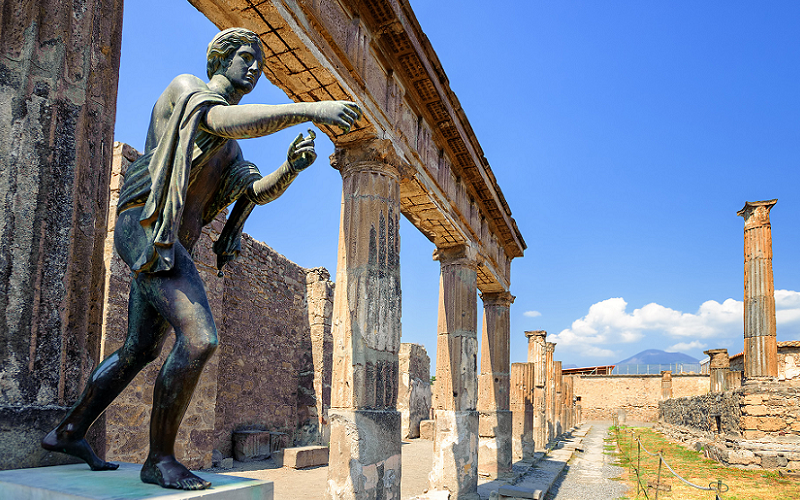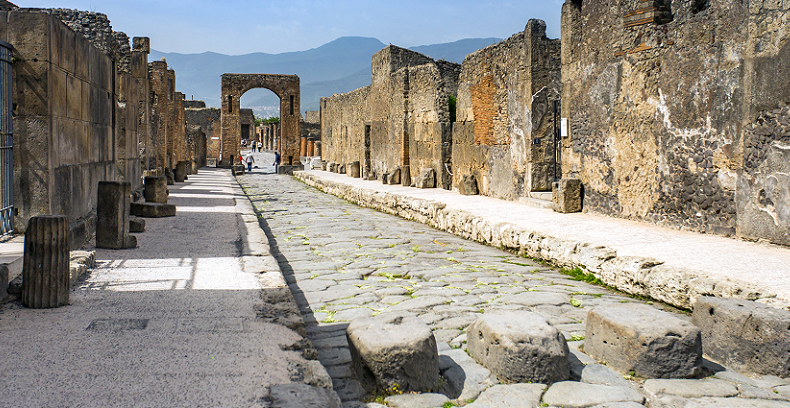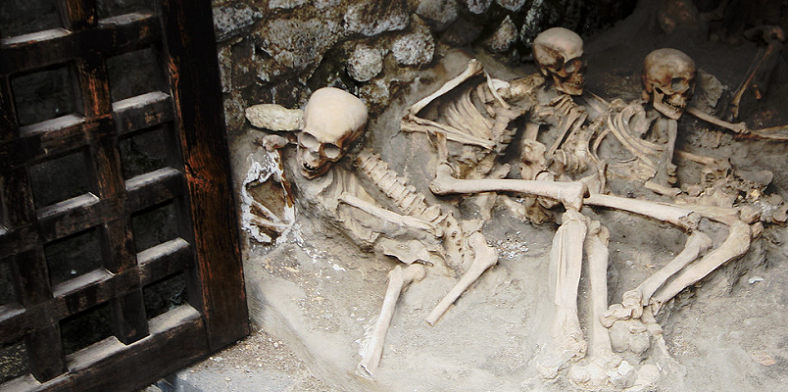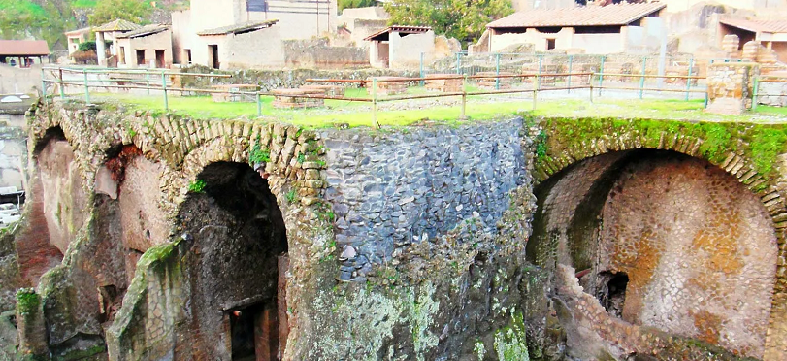
Italy is a country that is renowned for its rich history, stunning architecture, and breathtaking natural beauty. One of the most fascinating aspects of Italy is its ancient cities, which provide a glimpse into the past and allow visitors to discover the charm of Italy’s history and culture. Two of the most intriguing ancient cities in Italy are Pompeii and Herculaneum, both of which were buried by the eruption of Mount Vesuvius in 79 AD.
Introduction to Pompeii and Herculaneum
Pompeii and Herculaneum are two ancient Roman cities located in southern Italy, near the Bay of Naples. Both of these cities were destroyed by the eruption of Mount Vesuvius in 79 AD, which buried them under layers of ash and pumice, effectively preserving them for centuries. Today, both cities are archaeological sites that attract millions of visitors every year.
Pompeii was a thriving Roman city that was home to around 11,000 people at the time of its destruction. The city was founded in the 7th or 6th century BC and grew to become an important commercial center with a bustling port, vibrant markets, and luxurious villas. Pompeii was also famous for its cultural and religious traditions, with numerous temples, theaters, and amphitheaters dotting the city’s landscape. When Mount Vesuvius erupted, the city was completely buried under several meters of ash and pumice, preserving it almost perfectly for more than 1,500 years.
Herculaneum, on the other hand, was a smaller and more exclusive city, home to about 4,000 people. It was located closer to the sea than Pompeii and was renowned for its luxurious villas, which were owned by wealthy Roman citizens. Herculaneum was also home to several public buildings, such as a bathhouse, a gymnasium, and a theater. When Mount Vesuvius erupted, Herculaneum was buried under a thick layer of volcanic material, including pyroclastic flows, which preserved the city’s buildings and artifacts in remarkable detail.
Both Pompeii and Herculaneum were rediscovered in the 18th century, and since then, they have become some of the most important archaeological sites in the world. Visiting these ancient cities is a unique experience that allows visitors to step back in time and explore the daily lives, customs, and art of the ancient Romans. The cities offer a glimpse into a bygone era, and are a testament to the incredible cultural and artistic achievements of ancient Italy.

Exploring Pompeii
Exploring Pompeii is an incredible experience that takes visitors on a journey through time. The city is one of the most significant archaeological sites in the world and is home to numerous well-preserved buildings, artworks, and artifacts that offer a fascinating insight into the daily lives of the ancient Romans.
One of the most interesting things about Pompeii is the fact that it was so well-preserved after being buried by volcanic ash and pumice for over 1,500 years. As a result, the buildings and structures in the city are remarkably intact, giving visitors a glimpse of what life was like in a Roman city over 2,000 years ago. Pompeii was a bustling city, with numerous public buildings, markets, and temples, and there is much to explore and discover.
Some of the most popular sites to visit in Pompeii include the amphitheater, which was used for gladiatorial contests and other public events. The Forum is also a must-see, as it was the center of public life in the city and is home to numerous public buildings and temples. The House of the Vettii is another famous site in Pompeii and is one of the best-preserved houses in the city. It offers a fascinating insight into the daily lives of the wealthy citizens of Pompeii.
There are many other places to explore in Pompeii. Visitors can wander through the city’s winding streets, explore the public baths, or marvel at the colorful frescoes and mosaics that adorn many of the city’s buildings. The city also has several food and drink options, with restaurants and cafes that serve traditional Italian cuisine.
To get the most out of a visit to Pompeii, it’s a good idea to hire a guide who can offer insights into the history and culture of the city. Comfortable shoes, sunscreen, and plenty of water are also essential, as the city can be hot and dusty, particularly during the summer months.

Discovering Herculaneum
Herculaneum is another ancient Roman city that was destroyed by the eruption of Mount Vesuvius in 79 AD, alongside Pompeii. Like Pompeii, Herculaneum was buried under layers of ash and volcanic material, which preserved many of its buildings and artifacts for centuries. However, Herculaneum is less well-known than Pompeii, and as a result, it is often less crowded and provides a more intimate experience for visitors.
Herculaneum was a smaller and more exclusive city than Pompeii, and it was known for its luxurious villas, which were owned by wealthy Roman citizens. The city was also home to several public buildings, such as a bathhouse, a gymnasium, and a theater. Many of these buildings are incredibly well-preserved, with intricate mosaics, frescoes, and architectural details that offer a glimpse into the opulent lifestyle of the ancient Romans.
One of the most interesting sites to visit in Herculaneum is the House of the Deer, a luxurious villa that was owned by a wealthy Roman family. The villa is named after a stunning mosaic of a deer that is located in the central courtyard. The house also contains a well-preserved thermal bath, a private chapel, and several beautiful frescoes.
Another must-see site in Herculaneum is the College of the Augustales, a public building that was used for religious and civic ceremonies. The building is home to several well-preserved statues and murals, as well as a central courtyard that is surrounded by arcades.
Visitors to Herculaneum can also explore the House of the Mosaic Atrium, which is named after its stunning central atrium that is decorated with colorful mosaics. The house also contains a well-preserved kitchen and dining area, as well as several bedrooms.
Overall, exploring Herculaneum is a fascinating experience that offers a unique insight into the daily lives of the ancient Romans. The city is less well-known than Pompeii, but it is just as impressive and provides a more intimate and less crowded experience for visitors. Like Pompeii, it is a testament to the incredible cultural and artistic achievements of ancient Italy, and it is a must-see destination for anyone interested in history, art, and culture.

The Charm of Ancient Italy
The charm of ancient Italy lies in its ability to transport visitors back in time, to a world that is vastly different from our own. Ancient Italy was home to some of the most powerful and influential civilizations in human history, and the legacy of these civilizations is still evident in the art, architecture, and culture of modern Italy.
One of the most fascinating aspects of ancient Italy is its incredible architectural achievements. From the grandeur of the Colosseum in Rome to the stunning mosaics of Pompeii, ancient Italy was a land of great beauty and creativity. The ancient Romans, in particular, were master builders who created some of the most impressive architectural feats in human history. They built vast aqueducts, soaring temples, and intricate amphitheaters that still stand today, testaments to their incredible skill and vision.
Another aspect of ancient Italy’s charm is its rich cultural and artistic heritage. From the frescoes of Pompeii to the sculptures of ancient Rome, Italy has produced some of the most beautiful and influential artworks in human history. The ancient Italians were master storytellers, and their myths and legends continue to inspire artists and writers to this day. Italy is also home to some of the world’s most famous opera houses and theaters, which continue to showcase the incredible artistic traditions of the country.
Perhaps most importantly, the charm of ancient Italy lies in its ability to connect us to our shared human past. By exploring the ruins of Pompeii and Herculaneum, or wandering the streets of Rome, visitors can gain a deeper understanding of the ways in which our ancestors lived, worked, and played. They can see firsthand the impact that ancient Italy had on the world, and the incredible cultural and technological advancements that were made during this time.
The charm of ancient Italy is multifaceted and complex, encompassing the incredible architectural achievements, rich cultural and artistic heritage, and the connection to our shared human past that is offered by the ancient cities of Italy. By visiting places like Pompeii and Herculaneum, or exploring the streets of Rome and other ancient Italian cities, visitors can gain a deeper appreciation for the incredible history and culture of this remarkable country.
